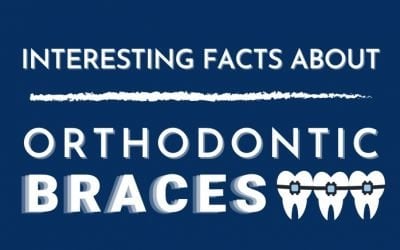Orthodontic Treatment Options in Australia

With so many new options now available to treat orthodontic problems, it’s understandable if you feel a little overwhelmed. Orthodontists use four common treatments for patients of all ages. As you will see, each has its pros and cons, but there’s no hiding the fact that traditional metal braces are still generally the best option for kids.
First off – What is an orthodontist?
If you’re wondering what an orthodontist is or how they differ from your regular dentist, then look no further. An orthodontist is a dental specialist who has done an additional three years of study and specialises in preventing, diagnosing, and treating dental and facial growth irregularities. Orthodontists provide a wide range of treatment options to straighten crooked teeth, fix bad bites and align the jaws correctly.
While they share many similarities with your regular dentist, including their general dental degree, only an orthodontist is qualified to treat and diagnose irregularities of the teeth and jaw properly.
How do I know if I need to see an orthodontist?
Whether you struggle with jaw issues from a misaligned bite, have overcrowding of teeth in your mouth, or want to improve the appearance of teeth by straightening them and reducing any gaps. These are some of the reasons why you should see an orthodontist. Only an orthodontist has the skills, knowledge, and experience to treat and diagnose dental irregularities safely. That is one reason why you should see an orthodontist for your treatment.
Whether you’re considering getting orthodontic treatment or want to understand your options and their costs, you should make an appointment with a registered specialist orthodontist to discuss your options.
4 common orthodontic options
1. Ceramic Braces: a popular choice for adults
Adults often favour ceramic braces as they’re less noticeable than standard metal braces, with clear or tooth-coloured brackets and optional tooth-coloured wires. For those children or teenagers who feel particularly self-conscious about metal braces, ceramic braces might be a good option – they work as well as braces and are less noticeable; however, they do cost a little more than traditional metal braces.
2. Lingual Braces: because no one will know
Lingual braces are truly invisible – these custom-made braces are attached to the inside surfaces of your teeth instead of the front. Lingual braces are 100% personalised to follow the individual contours of your teeth, ensuring they are as comfortable and effective as possible. However, because lingual braces are located near the tongue, they can take some time to get used to wearing and will temporarily impact speech and eating more than regular braces. It’s sporadic to see lingual braces on children; in fact, most lingual brace wearers are adults who require a truly invisible option.
3. Clear Aligners (e.g. Invisalign®): require discipline
A sequence of clear plastic aligners can provide a good alternative to fixed braces, especially for less severe orthodontic problems in teens and adults. Clear aligners are removable and virtually invisible. In most cases, they are not suitable for young children as their design is such that they can only move teeth efficiently in a fully developed adult dentition. Furthermore, if aligners are not worn responsibly or are removed from the mouth too often, the treatment will not work. On the other hand, fixed braces cannot be removed and are almost guaranteed to produce excellent treatment results.
4. Metal Braces: tried, tested, and terrific for kids
In an age of broad orthodontic treatment options, traditional metal braces are still the most common treatment option for kids and teens. With this type of treatment, tiny metal brackets are glued to the teeth. They are then connected with a thin wire, adjusted or changed at regular intervals to gradually straighten your teeth and correct your bite, making them very effective and reliable treatment options.
Modern metal braces are much smaller and more comfortable than ever before. You’ll often see metal braces jazzed up with colourful elastic modules to make them fun and fashionable for your kids! Although dependent on each case, traditional metal braces are generally the most cost-effective option compared to other orthodontic treatments.
What is the best age for orthodontic treatment?
When it comes to orthodontic treatment, age isn’t an issue. While it is generally recommended that orthodontic treatment should occur during the adolescent years when the patient is still undergoing physical growth, the developments in treatment options in recent years have meant more adults can achieve their perfect smile.
These days, there is no best age for orthodontic treatment.
Rather your willingness to care for your smile and consistently wear any removable devices will result in much better results at any age.
Are there any risks with orthodontic treatment?
Orthodontic treatment risk can include toothache and mild discomfort, scratches and ulcers, gum infections, enamel demineralisation, and root shortening.
To best ensure the health and safety of your teeth, it is vital that you always see a registered specialist orthodontist and refrain from attempting any DIY treatment methods, as these can damage your teeth and may result in tooth loss.
Whether you’re considering traditional braces or an alternative to braces, only an orthodontist has the training, experience, and expert knowledge to be able to offer you the full suite of treatment options and give you and your child the confidence that you’re in the best hands.
Click here to read the original article.
DISCLAIMER:
The content has been made available for informational and educational purposes only. Central Coast Orthodontics does not make any representation or warranties with respect to the accuracy, applicability, fitness, or completeness of the content.
The content is not intended to be a substitute for professional personal diagnosis or treatment. Always seek the advice of your dentist or another qualified health provider with any questions you may have regarding a dental or medical condition. Never disregard professional advice or delay seeking it because of something you have read or seen on the Site.
Learn More About
Related Articles
Unfinished Smiles Welcome Here – We’ll Pick Up Where You Left Off
Is Smile Direct Club’s insolvency leaving your teeth realignment process stranded? As Invisalign Diamond Plus providers…
Interesting Facts About Orthodontic Braces
Wanting to get orthodontic braces but feeling unsure because you don't have knowledge about its...
Three Benefits of Invisalign
Did you know that aside from being an option for straightening your teeth, there are also benefits...
Metal Braces: Does This Traditional Dental Technology Have a Future?
Of all the medical professions, dentistry has always generated the most fear and continues to;...







